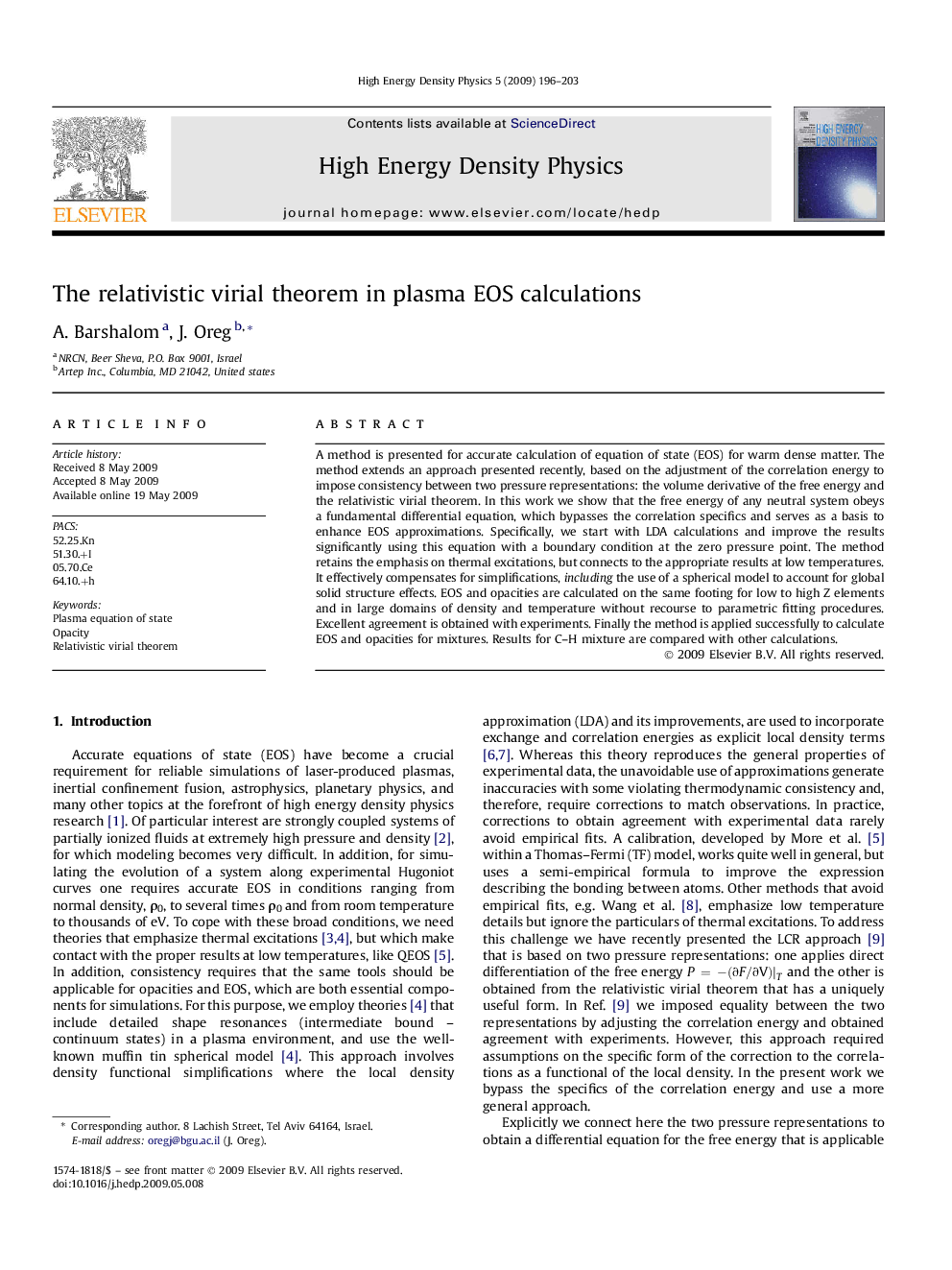| Article ID | Journal | Published Year | Pages | File Type |
|---|---|---|---|---|
| 1772809 | High Energy Density Physics | 2009 | 8 Pages |
Abstract
A method is presented for accurate calculation of equation of state (EOS) for warm dense matter. The method extends an approach presented recently, based on the adjustment of the correlation energy to impose consistency between two pressure representations: the volume derivative of the free energy and the relativistic virial theorem. In this work we show that the free energy of any neutral system obeys a fundamental differential equation, which bypasses the correlation specifics and serves as a basis to enhance EOS approximations. Specifically, we start with LDA calculations and improve the results significantly using this equation with a boundary condition at the zero pressure point. The method retains the emphasis on thermal excitations, but connects to the appropriate results at low temperatures. It effectively compensates for simplifications, including the use of a spherical model to account for global solid structure effects. EOS and opacities are calculated on the same footing for low to high Z elements and in large domains of density and temperature without recourse to parametric fitting procedures. Excellent agreement is obtained with experiments. Finally the method is applied successfully to calculate EOS and opacities for mixtures. Results for C-H mixture are compared with other calculations.
Related Topics
Physical Sciences and Engineering
Physics and Astronomy
Astronomy and Astrophysics
Authors
A. Barshalom, J. Oreg,
